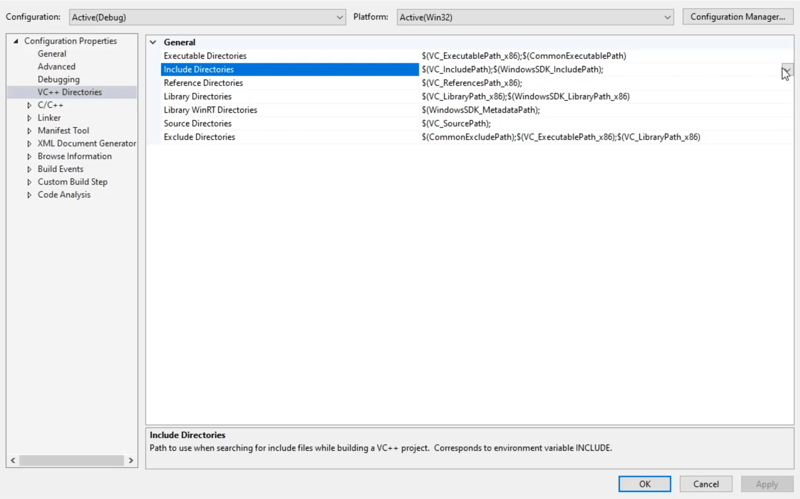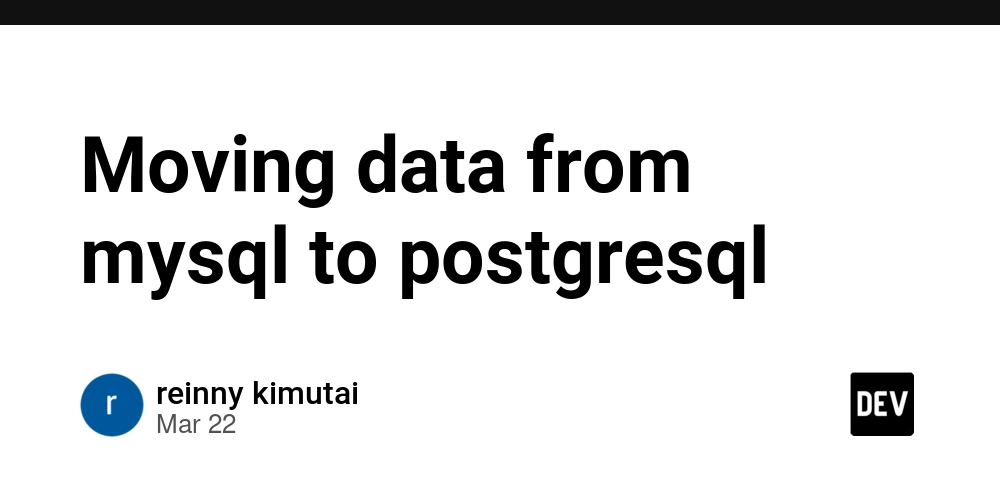SQL for newbies (as a web developer)
Context Some time ago, as web developer, I had to use PostgreSQL and write some SQL queries to fetch some data. I have a school level about SQL, so the first queries were difficult to write and I didn't find a memo about my use cases. So this article acts as a "SQL memo" for web developer wondering to create basic SQL queries to fetch some data from SQL databases (especially PostgreSQL database, in my case). Select data The most basic query is the following: select * from my_table Select all data from table my_table We avoid fetching all data, we select the desired columns: select t.id, t.name from my_table t Select the columns id and name from my_table using t as an alias for my table It's common for us to filter data select t.id, t.name from my_table t where t.category = 'my_category' Filter on the category Renaming columns To skip a mapping step during the fetch process, we can rename columns to match with our code base: select t.id as "idTable", t.name as "nameTable" from my_table t Rename the fields id and name as idTable and nameTable Join the tables Usually, we need to fetch data from multiple tables. This section is not a SQL join course so keep in mind 2 things: When you join 2 tables and not want lose rows if some match doesn't exist on the second table, use a left join When you join 2 tables and want to filter rows doesn't have a match with second table, use inner join Tip : When you build your query, start by left join and refine with inner join if necessary to avoid lose data Credit Left join select t.id, t2.address from my_table t left join my_table_2 t2 on t.id = t2.table_id We join the tables using the table_id column of my_table_2 that matches with the id column of my_table. Using left join, no rows of my_table are lost but some fields of my_table_2 can be null. Inner join select t.id, t2.address from my_table t inner join my_table_2 t2 on t.id = t2.table_id We join the tables using the table_id column of my_table_2 that matches with the id column of my_table Using inner join, some rows of my_table can be lost. Build JSON object As web developer, we like to use JSON objects. We can create the JSON using SQL to simplify the data manipulation. Combined with the as keyword to rename columns, it is very useful! select json_build_object( 'id', t.id, 'name', t.name ) as my_json_object from m_table t On each row, we have the column my_json_object that contains JSON with the keys "id" and "name" Create JSON array Sometimes, we need to have arrays of JSON object. We can easily do it with SQL with json_agg! select json_agg( json_build_object( 'id', t.id, 'name', t.name ) as my_json_object ) as my_json_array from m_table t In the first (and only) row, in the column my_json_array, we have the wanted JSON array Use "sub queries" For complex queries, I can be useful to split big request into multiple one. For example, a case of a query that aggregates multiple tables and another query based on the first one to do some logic to it. select json_agg( json_build_object( 'id', "source".id, 'address', "source".address ) ) from ( select t.id, t2.address from my_table t left join my_table_2 t2 on t.id = t2.table_id ) as "source" limit 5 A "first select" fetch the data under "source" and the upper select format the data Conclusion This article is a small memo with only the most basic commands used in my use-cases in web development. I hope it can help someone !

Context
Some time ago, as web developer, I had to use PostgreSQL and write some SQL queries to fetch some data.
I have a school level about SQL, so the first queries were difficult to write and I didn't find a memo about my use cases.
So this article acts as a "SQL memo" for web developer wondering to create basic SQL queries to fetch some data from SQL databases (especially PostgreSQL database, in my case).
Select data
The most basic query is the following:
select *
from my_table
Select all data from table my_table
We avoid fetching all data, we select the desired columns:
select t.id, t.name
from my_table t
Select the columns id and name from my_table using t as an alias for my table
It's common for us to filter data
select t.id, t.name
from my_table t
where t.category = 'my_category'
Filter on the category
Renaming columns
To skip a mapping step during the fetch process, we can rename columns to match with our code base:
select
t.id as "idTable",
t.name as "nameTable"
from my_table t
Rename the fields id and name as idTable and nameTable
Join the tables
Usually, we need to fetch data from multiple tables.
This section is not a SQL join course so keep in mind 2 things:
- When you join 2 tables and not want lose rows if some match doesn't exist on the second table, use a left join
- When you join 2 tables and want to filter rows doesn't have a match with second table, use inner join
Tip : When you build your query, start by left join and refine with inner join if necessary to avoid lose data
Left join
select
t.id,
t2.address
from my_table t
left join my_table_2 t2 on t.id = t2.table_id
We join the tables using the table_id column of my_table_2 that matches with the id column of my_table.
Using left join, no rows of my_table are lost but some fields of my_table_2 can be null.
Inner join
select
t.id,
t2.address
from my_table t
inner join my_table_2 t2 on t.id = t2.table_id
We join the tables using the table_id column of my_table_2 that matches with the id column of my_table
Using inner join, some rows of my_table can be lost.
Build JSON object
As web developer, we like to use JSON objects. We can create the JSON using SQL to simplify the data manipulation.
Combined with the as keyword to rename columns, it is very useful!
select
json_build_object(
'id', t.id,
'name', t.name
) as my_json_object
from m_table t
On each row, we have the column my_json_object that contains JSON with the keys "id" and "name"
Create JSON array
Sometimes, we need to have arrays of JSON object. We can easily do it with SQL with json_agg!
select
json_agg(
json_build_object(
'id', t.id,
'name', t.name
) as my_json_object
) as my_json_array
from m_table t
In the first (and only) row, in the column my_json_array, we have the wanted JSON array
Use "sub queries"
For complex queries, I can be useful to split big request into multiple one.
For example, a case of a query that aggregates multiple tables and another query based on the first one to do some logic to it.
select
json_agg(
json_build_object(
'id', "source".id,
'address', "source".address
)
)
from (
select
t.id,
t2.address
from my_table t
left join my_table_2 t2 on t.id = t2.table_id
) as "source"
limit 5
A "first select" fetch the data under "source" and the upper select format the data
Conclusion
This article is a small memo with only the most basic commands used in my use-cases in web development.
I hope it can help someone !











































































































































































![[The AI Show Episode 142]: ChatGPT’s New Image Generator, Studio Ghibli Craze and Backlash, Gemini 2.5, OpenAI Academy, 4o Updates, Vibe Marketing & xAI Acquires X](https://www.marketingaiinstitute.com/hubfs/ep%20142%20cover.png)




























































































































![[DEALS] The Premium Learn to Code Certification Bundle (97% off) & Other Deals Up To 98% Off – Offers End Soon!](https://www.javacodegeeks.com/wp-content/uploads/2012/12/jcg-logo.jpg)


![From drop-out to software architect with Jason Lengstorf [Podcast #167]](https://cdn.hashnode.com/res/hashnode/image/upload/v1743796461357/f3d19cd7-e6f5-4d7c-8bfc-eb974bc8da68.png?#)








































































































.png?#)

































_Christophe_Coat_Alamy.jpg?#)
 (1).webp?#)





































































































![Apple Considers Delaying Smart Home Hub Until 2026 [Gurman]](https://www.iclarified.com/images/news/96946/96946/96946-640.jpg)
![iPhone 17 Pro Won't Feature Two-Toned Back [Gurman]](https://www.iclarified.com/images/news/96944/96944/96944-640.jpg)
![Tariffs Threaten Apple's $999 iPhone Price Point in the U.S. [Gurman]](https://www.iclarified.com/images/news/96943/96943/96943-640.jpg)


































































































































![[SQL] - Inner Join, Left Join, Non-Equi Join, Self Join](https://media2.dev.to/dynamic/image/width=800%2Cheight=%2Cfit=scale-down%2Cgravity=auto%2Cformat=auto/https%3A%2F%2Fdev-to-uploads.s3.amazonaws.com%2Fuploads%2Farticles%2Fm92uqxdtn6t3pwxuxu2i.png)

